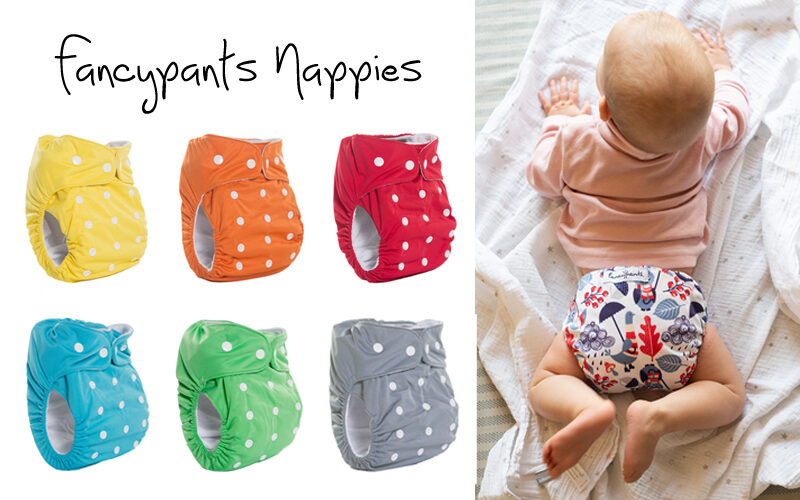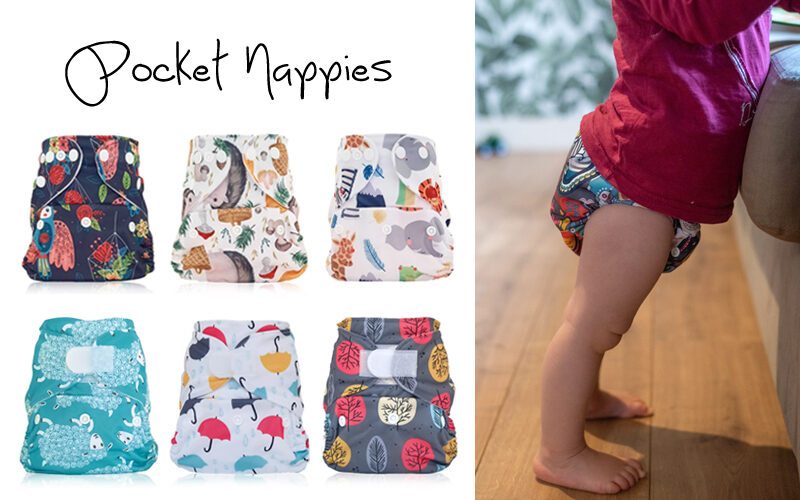Using cloth nappies at night can be very intimidating. There are some basic guidelines that will make your change to a night-time solution a little easier.
If you consider that the average daytime nappy is suitable for 3-4 hours of wear, then it is easy to understand that night nappies must offer more absorption to be effective. This means that any night time solution must be able to provide a snug fit while comfortably holding boosters or extra inserts.
Output: It is useful to figure out your little one’s output. This will help guide your choices for your night time solution. To figure out what your output is weigh your dry disposable and then weight it again in the morning:
Light: 0-200ml
Medium: 200-400ml
Heavy: 400-600ml
Super Heavy: 600ml +
It is now time to build a night time solution that will cater for your little one’s output.
The following must be considered:
Comfort: Bulkiness is a reality for night time cloth. There need to be multiple layers to handle the flow of wee through the night. This does not mean that baby will be uncomfortable but it is advisable to use looser fitting PJs to avoid compression leaking. Adding fleece liners to your night cloth will provide a stay dry affect. Due to the extended time of wear, it is often advisable to avoid PUL covers in favour of a gentler option like, fleece, softshell or wool.
Fabric: Night nappies should be made from natural fibres like Bamboo, Hemp and Cotton, they are able to absorb moisture, help regulate temperature and are safe for baby’s skin. Synthetic fibres are prone to compression leaks and should be avoided.
Fit: Just like your day time nappies your night nappy must fit properly. This means snug in the panty-line, no gaps around the waist and adjusted rise snaps. Using a big nappy that is ill fitting will not be an effective solution. The wee will simply run out of the nearest gap. A nappy that is correctly fitted will be able to do its job properly.
Absorption: As mentioned above there need to be multiple layers to maximise absorption. It is advisable to layer the inserts where they will work the hardest, i.e. the wetzone. This will help the nappy cope with forceful wees in that area. If baby is a tummy sleeper it is a good idea to add layers in the front of the nappy.
Boosting: this is adding even more layers as necessary. As your baby grows and the output increases you will start to use inserts to provide extra layers.
Care: It is important to note that you will have to wash these nappies daily as night wee tends to be quite strong. At the absolute minimum they should be thoroughly rinse with warm water and squeeze dried before storage until wash day. This is to avoid ammonia build-up, repelling issues and unpleasant odours. These issues will lead to leaks and possible nappy rash.
Prepping: this is the process that allows the natural fibres to reach full absorbency. Washing your nappies at least once before use will help remove the natural residue and oils to improve absorption. The process can be completed over a series of washes, i.e., 6-8 washes for full prep.
Hack: a hot wash or two will speed up the process but it is important to note that continuous high temp washing is not advised.
What do you need?
The Cloth: there are different options available to ensure a successful night time solution.
Fitted Nappies – these are generally made from natural cloth only to maximise absorption. This means that along with your nappy you will need to consider a cover. They are bulkier that the average cloth nappy and are often considered the perfect night time solution. We offer 3 Fitted Nappies:
Bamboo Fitted Nappy (OSFM)
Bamboo Fitted Newborn Nappy
Hemp Fitted Nappy
Hemp Flats – this is a more traditional style of nappy. The flats are made from Hemp jersey and are a trim, super absorbent option. They are also favoured for their easy cleaning and fast drying nature. Flats are used in conjunction with covers and Snappis. There are 2 sizes of flats available:
Newborn (50×50)
OSFM (70×70)
Other nappies – It is possible to use your regular daytime nappies at night, e.g., the Sleeve or Pocket nappy. This is only suitable for light to medium wetter and will require additional inserts. Please note that the All-In-One not is not considered a suitable nappy for night time as it is difficult to boost effectively.
The Cover: most night time options are not waterproof. It is therefore necessary to consider covers. There are various options available:
Fleece Covers (OSFM): these are a favourite for night time as they are soft, stay dry and breathable. Fleece covers are also very easy to clean and fast drying. They work by repelling the moisture back into the nappy.
PUL Covers: these are not generally favoured as the long wear time can cause redness. This is generally caused by the harder folded over elastics. If you prefer this option, then it is advisable you use you fleece liners to protect baby’s delicate skin.
OSFM
Newborn – Snaps
Newborn – Velcro
Softshell Covers (Newborn): has a soft, fleecy inner with a hidden breathable waterproof film. They have a softer elastic than PUL covers that won’t irritate the panty line.
Fleece Liners: at night it is important to try increase baby’s comfort. Fleece Liners are recommended as they keep a soft, dry layer between the skin and the damp cloth. Fleece does not absorb or hold onto any dampness; it simply allows the wee to pass through to the thirsty nappy through the night. This also means that they can stick out of the nappy and protect sensitive skin from tough elastics and trims.
Extra Absorption: if your baby is a medium to heavy wetter you will need to boost your night time nappy to maximise the absorption. Hack: to avoid bulk in the nappy lay the booster pad or insert between the nappy and the cover. This will increase the absorption without compromising the fit.
Boosters: these pads are smaller than regular inserts and are generally more suited to Newborn solutions.
Hemp Booster Pads: available as a single pad consisting of 3 layers of Hemp jersey
Bamboo Booster Pads: 3 layers of Bamboo/Organic Cotton blend pads sold as a 3 pack
Inserts: regular sized inserts are a great way to add layers to your night time solution. Inserts can be used inside the nappy to assist with absorption in the wet zone and while it is recommended to use natural fibres however a well placed Microfibre inserts could assist with a forceful wee. To add even more layers more inserts can be put between the nappy and the cover. You can add as many inserts as needed until the fit of the nappy or cover is compromised.
Hemp Inserts
Bamboo Inserts
Microfibre Inserts
Trifolds: Bamboo trifolds are a great way to add multiple layers with one insert. They are folded in 3 to the size of a regular insert.
Examples of solutions:
Light Wetter
1. Double stuffed Pocket Nappy with Bamboo or Hemp inserts
2. Pad folded Hemp flat in a Pocket Nappy
3. Hemp flat and cover combo
4. A fitted nappy and cover – more than sufficient
5. Two Hemp flats and cover – more than sufficient
Medium Wetter
1. Double stuffed Sleeve Nappy (Pockets and All-In-Ones are not suitable at this point)
2. Fitted nappy and cover – an additional insert for extra insurance
3. Two Hemp flats and cover – an additional insert for extra insurance
Heavy Wetter
1. Fitted nappy, additional inserts and cover
2. Two Hemp Flats, additional inserts and cover
Washing Instructions
It is important to take care of your night time cloth daily. The volume of wee that passes through these nappies puts them at risk for ammonia build up which will lead to repelling, odours, and deterioration. All the standard washing rules apply; no bleach, no softeners, avoid baby laundry detergents and extreme temperatures.
It is advisable to rinse your night time cloth with warm water as soon as possible.
Hack: rinse your nappies while you are showering to save time and water.
Once your nappies are thoroughly rinsed squeeze out as much water as possible.
If you are running your washing machine add your night time cloth to the load.
Make sure that when they come out the machine that they smell neutral. There should be no lingering wee or soap smells.
If you are not using your washing machine you should wash by hand. We recommend the Bucket & Plunger Method for a good clean. Place your cloth in a bucket with your regular detergent or Super Nappy Wash. Use a plunger to vigorously agitate the nappy. Count off 100 plunges before draining the water. Repeat the process with clean water for your rinse, count off 50 plunges. Drain water and check your nappies for lingering wee or soap. If necessary, repeat the rinse cycle.
Note: a gentle hand wash will suffice for your covers.






